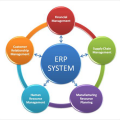Due to advanced age or disability, you or a loved one may find it more difficult to do everyday activities such as cooking, taking a bath, dressing, moving around the house, and grocery shopping. When this happens, it may be time to consider an assisted living facility. In these specialized living spaces, you can get the daily care you need while still retaining a large part of your personal independence. It may seem daunting to leave your home at first, but in most cases, it’s the most practical option for you and your loved ones.
Concerns about moving to an assisted living can be addressed by knowing exactly what it is and how it works. Also known as residential care, congregate care or alternative care, assisted living is a housing option for older adults who need some assistance with their daily activities. Caregivers provide appropriate support for basic activities such as cooking meals, personal hygiene, maintaining the house, and even traveling. This type of facility may be a good choice if you require hands-on assistance, but do not need 24/7 supervision and medical care that a full-time caregiver or nursing home provides.
Generally, actual homes and apartment complexes are used in assisted living programs to avoid giving patients a sense of confinement. You can continue living as you would in any other residence, but you’ll be supported with regular services for activities that are difficult to perform alone. These may include:
- Meal preparation
- Assistance with eating
- Bathroom activities
- Walking
- Transportation
- Laundry services
- Housekeeping
- Round-the-clock security
- Exercise and wellness
- Medication management
- Social and recreational activities
- Access to medical services
The types of services vary by state, so it’s best to check with specific facilities to see if they offer the desired service(s) that are important to you.
Other things you should know about assisted living communities:
-
Services Vary Between Assisted Living Providers
Since licensing requirements for assisted living vary by state, some senior communities may not have the same level of care as others. Some facilities may offer less expensive rates, but offer a lower level of patient assistance. Some may employ licensed nurses and caregivers, while others have personal care staff trained to take care of seniors. Others will attend to medical issues, while others only provide light care.
-
Assisted Living Can Be Less Expensive
While often mistaken for nursing homes, assisted living facilities can be more cost-effective than their more popular counterparts. According to a survey conducted in 2012, the national average cost of housing for a person in an assisted living community is around $3,300 per month. In contrast, the average nursing home will charge around $3,861. That’s almost $600 saved per month, or just under $6,700 per year.
While 86.2% of those who live in assisted living communities pay using their personal resources, most states provide “home and community-based waivers” to provide care for people who require assisted living, but are unable to afford it.
-
Communities Have Different Personalities
Aside from the variety in care and services, assisted living communities also differ in look and feel. Some may resemble hospitals or clinics with more formal-looking designs while others have a more homey, grounded kind of ambiance. Even the type of architecture and interior design can differ.
Assisted living communities also vary according to size and shape. They can be low-rise apartment buildings or sprawling complexes, located in urban or rural area or consist of a small number of rooms or accommodate a large number of residents. There is no standard outlined by law, but assisted living communities are usually licensed to serve at least 20 people.
Larger facilities in more populated areas can accommodate hundreds of residents. If you opt to stay in a large community, you’ll want to make sure that living spaces remain private and spacious enough for your needs. You’ll also want to make sure that the facility is staffed to accommodate the demands of a large community with specialized needs.
-
Materials and Equipment Vary
Different assisted living facilities use different suppliers of equipment and materials for caregiving. When you’re trying to narrow down the choices for an assisted living provider, take the time to inspect their facilities thoroughly. Make sure assistive technology and equipment for the elderly is readily available to help you perform daily tasks with relative ease and maximum safety.
Some of the things to consider include:
- Bathroom safety equipment and fixtures
- Bedroom safety equipment and fixtures
- Availability of medical supplies
- Chairs and other furnishings for the elderly
- Daily living aids (shoe horns, protective clothing, eating and drinking aids, etc.)
A quality assisted living facility will have most, if not all, of these items. Appropriate equipment and supplies enable caregivers to maximize the safety, care and convenience for elderly individuals.
Choosing the right assisted living facility requires plenty of due diligence and self-education on the part of the senior citizen and loved ones. Carefully consider the needs involved and what is offered by each facility. Take your time and consult all the parties directly involved. This commitment involves significant time and money, so you’ll want to make the right choice from the very beginning.






























No Comments
Leave a comment Cancel